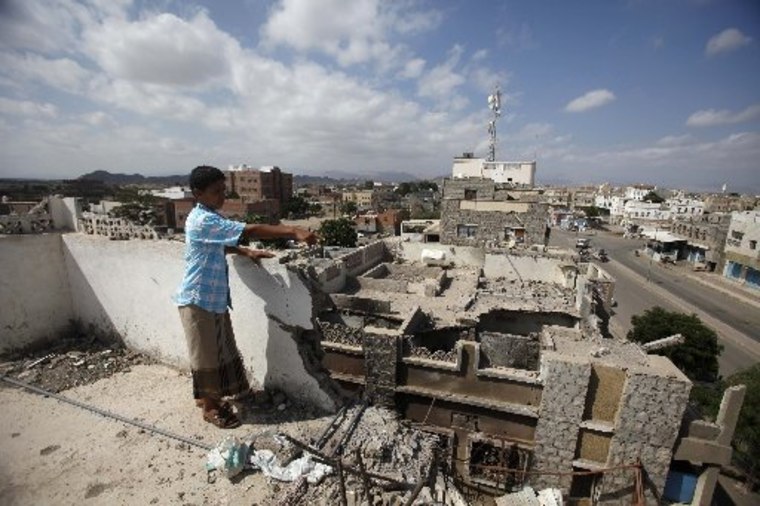The United States once envisioned analyzing the threat of terrorism as a futures market. That dubious idea quickly crashed, but if the changing threat of terrorism was a commodity, the global security thinkers and counterterrorism experts who convened at the Aspen Security Forum in Colorado last week are bears.
Looking back, the threat that manifested itself on September 11 has been largely contained. Only 18 American citizens have been killed in terrorist attacks since then. Most victims over the past decade have been Muslims, which is why the al Qaeda brand has been greatly devalued. It has been a non-factor in the ongoing Arab Awakening. But looking ahead, it could make a comeback.
The headlines of the four-day security conference were Edward Snowden and Syria. On Snowden, the political debate was welcomed even as Snowden himself was criticized for naïve travel planning as well as damage to national security. Counterterrorism experts expressed concern--if not surprise--at how quickly security politics made a U-turn. After the Boston Marathon bombing, the political narrative was why wasn’t more done to prevent it. Barely three months later, due to the Snowden leaks, the public reaction to the collection and storage of metadata has swung to the opposite extreme.
A number of speakers expressed concern about the evident lack of trust in government; the potential erosion of international cooperation in combatting violent political extremism; and the worry that the Obama administration will prematurely declare an “end”–at least politically–to what was once called the war on terror.
That concern is rooted in disturbing trends in Syria, which could reasonably be considered Islamic terror’s new central front.
Foreign fighters are gravitating to Syria from throughout the region in the same way they once did to Iraq. There are somewhere between 1,200 and 2,000 opposition groups engaged in the civil war, including some like al-Nusra that identity with al Qaeda. This complicates the ability of the United States and others to provide assistance to the diverse Syrian opposition.
The Syrian regime has regained momentum in recent weeks, raising the prospect that the conflict is no longer specifically linked to the fate of Bashar al-Assad and could continue indefinitely. The deepening sectarian divide between Sunnis and Shia could spread more broadly as more proxies join the fray. Foreign fighters who currently number roughly 10% of the opposition will eventually migrate home with well-honed military skills that will challenge the region’s weakened governments. While many such groups at the moment are focused on local issues, they can shift their focus to the U.S., the “far enemy,” at any time.
These extremists have more room to maneuver. The political vacuum in Libya proved costly to the United States with the deaths of Ambassador Chris Stevens and three others in Benghazi last September. A political vacuum in Mali necessitated a military response by France. Al Qaeda in Iraq just executed an audacious prison break. The last time Egypt experienced political turmoil on the scale we are seeing now, it produced the violent movement Egyptian Islamic Jihad, which eventually merged with al Qaeda. Ayman al-Zawahiri, its former leader, now heads the diminished core al Qaeda.
Add to that the homegrown threat that manifested itself in Boston and it’s clear that terrorism remains a significant (if not overarching) long-term security challenge for the next decade or more. We are entering a period of persistent but manageable danger, much like the Cold War, a twilight zone between war and peace.
The comparison is inexact, but an effective strategy will involve the employment of multiple tools–political, economic, intelligence, social, cultural and military–to eliminate extremist leaders, deny safe haven to virulent groups and ultimately change conditions on the ground that give rise to terrorism in the first place.
This need not require a new Truman Doctrine–not every inch of territory need be contested as it theoretically was during the Cold War. President Obama’s decision not to rush militarily into the multi-layered conflict in Syria avoids the kind of miscalculation we made in Vietnam: the United States cannot dictate a solution in Syria at a cost that is acceptable or sustainable.
But the United States should think about a modest version of a Marshall Plan for the Middle East, building up government institutions along this arc of instability from Pakistan across to Algeria. Seventy years ago, Washington invested in an international web of alliances and nurtured stable, democratic and market-oriented partners over time (admittedly in key places but not everywhere, especially the Middle East) that successfully contained the threat until it evaporated from its own contradictions.
Unfortunately, much of the current security debate is about subtraction–the sequester and its impact on the Pentagon, especially a decline in military readiness. There is virtually no discussion about addition, particularly regarding diplomacy, development and intelligence capabilities that will be more relevant to the difficult and complex political, economic and social transitions underway in the Middle East. These countries need help and fast.
But there is a growing political vacuum in the Middle East that, unlike the end of World War II, is not being filled by the United States, but rather by countries and proxies that see developments through a sectarian rather than democratic lens. The one unifying force across the region is anger at or disappointment with Washington.
Having politically pivoted in recent years from the Middle East to Asia, the United States is not leading from behind. It’s simply behind and reacting to, rather than shaping, what happens next.
P.J. Crowley is a former Assistant Secretary of State and now a professor of practice and fellow at The George Washington University’s Institute of Public Diplomacy and Global Communication.
